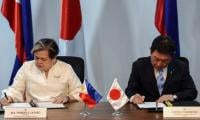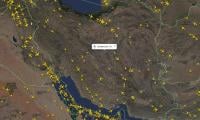Net-metering fallout
This was first introduced in Minnesota in the US in 1983
We wrote about household solar and its adoption in Pakistan last year (October, 2023 for PIDE) and since then many a storm has erupted on the local landscape on this issue coupled with net metering.
Net metering is a typical policy area where countries like Pakistan are best served to wait till all research has been done in the local context and a public consensus built around the pros and cons. The Pakistani government, like it did in the case of the IPPs, went headlong without the prerequisite policy research, debate, and consensus building to implement net-metering. Immediate ‘wins’ were celebrated.
The fundamental issue being ignored is the experience. Since being introduced in the US in the 1980s, it was seen that net metering required countries to be open to the public and to themselves about how they would balance the two core variables of ensuring energy equity and maintaining grid stability – requiring dynamic and localized policies rather than a single brush country wide application, like Pakistan does from Gilgit-Baltistan and Chitral to Tharparkar and Gwadar. When the power corridors of a country live in a small village across its border – called Islamabad – this happens often.
Generally, the net metering policy allows households (and others) drawing electricity from a centralized grid through the local energy supply company (ESCO) and producing their own renewables-based electricity to sell the excess electricity back to the grid, thereby reducing their electricity bills. This was first introduced in Minnesota in the US in 1983, and since then started being viewed as a local panacea for reducing the weight on consumers’ wallets.
This bubble started bursting within a few decades as widespread utilization gained favour. The fact was that only the relatively rich had money to become independent power producers based on renewable technologies, and the many power plants supplying the central grid needed payment for their operations and production or the plants would shut down. In fact, the reason net metering was invented was precisely why the plants could not shut down.
Electricity once generated, and without storage, must be used or it gets wasted. Initially policymakers saw the excess household energy to cater to an ever-growing demand for electricity by allowing excess ‘clean’ electricity from households (and others) to enter the central grid. Multiple issues followed. As localized energy from households grew, the grid wanted to buy less from the power plants. The power plants could not produce as they had been installed for being efficient producers at certain capacities and without regular payments, they could not keep up operations.
I am sure you will start seeing the mess being created. There were issues with keeping the central grid stable with multiple producers sending to and drawing electricity from it – though Pakistan never entirely got there.
Pakistan was already reeling from our so-called ‘power-sector debt’, also famously called ‘circular debt’, when this policy was introduced – not realizing that with the state of the sector the mess would be amplified if this policy were adopted across the board. This is where we stand today.
All this has happened without the Pakistani policymakers realizing that many countries around the world have been reconsidering net metering policies for the following reasons, including the US. Households (and organizations) with low-incomes cannot afford their own electricity nor participate in net metering schemes – voiding governments’ primary responsibility to uphold equity. Grid stability is difficult to maintain with so many folks trading and even the most modern of grids struggle at some point.
The electricity generators, the IPPs, are not running systems that can be turned on and off within days and need to maintain generation fuels’ supplies – all requiring healthy cash flow. They cannot even be told to shut down as the renewable sources of energy cannot maintain a twenty-hour load profile specific supply without storage and or IPPs supplying to the grid.
From the US to Africa to Australia, countries are looking at agile policymaking and dealing with net metering on a localized level instead of single brush policies applicable to deal with the issues arising from haphazardly implemented net metering policies. Policies can include developing localized polycentric solutions such as richer local producers (households and others) supplying excess back to localized grids serving the proximate poorer households (and other users); earning social service and impact points from the government.
No matter what policies are being adopted, household net metering is no longer the ‘darling’ of any government or policy maker and measures are being adopted to ensure equity and grid stability.
For Pakistan, the challenge is amplified as the contracts with central IPPs are already a burden on the people. In such a situation, there is a need for such policies on electricity to be shifted to provincial and local levels (when we have these officially) with careful planning at ESCOs’ level to ensure a win at each location.
It is not simply a matter of saying we have 6,000 MW of self-generated renewable electricity available – rather: ask where they are concentrated. Otherwise, this elite lobby will force itself on the broader policymaking agenda of the Pakistani government, subverting the lesser privileged.
Amer Zafar Durrani is the president of Reenergia.
Komal Kenneth Shakeel is a senior economist at Reenergia.
-
 Microsoft Secures Largest Ever Soil Carbon Credit Agreement Amid Data Centres Expansion
Microsoft Secures Largest Ever Soil Carbon Credit Agreement Amid Data Centres Expansion -
 Google Expands Gemini With Personal Intelligence
Google Expands Gemini With Personal Intelligence -
 Japan, Philippines Sign Defence Pacts As Regional Tensions Escalate
Japan, Philippines Sign Defence Pacts As Regional Tensions Escalate -
 ISS Crew Of Four Completes Medical Evacuation With Safe Splashdown Off California
ISS Crew Of Four Completes Medical Evacuation With Safe Splashdown Off California -
 Connor Storrie Reveals Why His Dad Hasn't Seen 'Heated Rivalry' Yet
Connor Storrie Reveals Why His Dad Hasn't Seen 'Heated Rivalry' Yet -
 Meghan Markle’s Biggest Challenge In UK Return As She Struggles To Control Narrative
Meghan Markle’s Biggest Challenge In UK Return As She Struggles To Control Narrative -
 Princess Beatrice, Eugenie Angry As King Charles Ends Their Financial Security
Princess Beatrice, Eugenie Angry As King Charles Ends Their Financial Security -
 Chase Infiniti Shares Her Working Experience With Leonardo DiCaprio
Chase Infiniti Shares Her Working Experience With Leonardo DiCaprio -
 Todd Bridges And Wife Bettijo B. Hirschi Separate After Three Years Of Marriage
Todd Bridges And Wife Bettijo B. Hirschi Separate After Three Years Of Marriage -
 Germany Sends Troops To Greenland Amid Rising Arctic Tensions
Germany Sends Troops To Greenland Amid Rising Arctic Tensions -
 Jonathan Quick, The New York Rangers Face Mounting Pressure As Losses Pile Up
Jonathan Quick, The New York Rangers Face Mounting Pressure As Losses Pile Up -
 Timothée Chalamet, Kylie Jenner Are Living Together In LA: Source
Timothée Chalamet, Kylie Jenner Are Living Together In LA: Source -
 Johnny Knoxville Net Worth: How The Actor Built A $50mn Fortune
Johnny Knoxville Net Worth: How The Actor Built A $50mn Fortune -
 Meghan Markle Hidden Agenda Behind Returning To UK Exposed
Meghan Markle Hidden Agenda Behind Returning To UK Exposed -
 Raptors Vs Pacers: Toronto Shorthanded With Key Players Ruled Out Due To Injuries
Raptors Vs Pacers: Toronto Shorthanded With Key Players Ruled Out Due To Injuries -
 Iran Flight Radar Update: Airspace Closure Extended Amid Heightened Tensions
Iran Flight Radar Update: Airspace Closure Extended Amid Heightened Tensions




